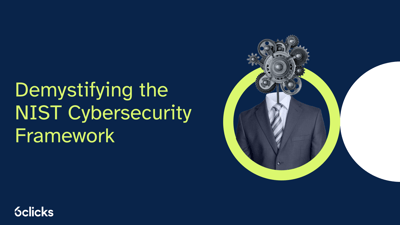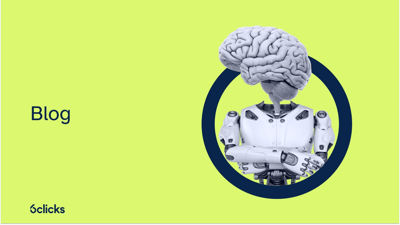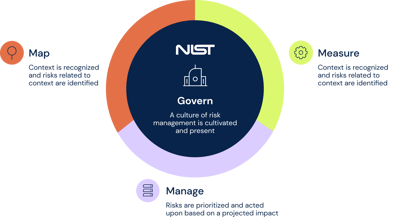The National Institute of Standards and Technology Cybersecurity Framework (NIST CSF) is a powerful tool to reduce cybersecurity risks in an organisation. It is a voluntary framework, however, it is recommended because it provides guidelines on cybersecurity best practices that can help strengthen your cybersecurity program. Developed at NIST at the U.S. Department of Commerce to improve cybersecurity measures, the framework can be applied to all businesses in almost any sector. NIST CSF with its outcomes-based approach is now very relevant as cybersecurity incidents become more sophisticated and vicious than ever.
The NIST CSF core is a set of activities and their desired outcomes. It also has informative references that are common across critical infrastructure for various businesses. The core is useful in setting standards and practices and effectively communicating them throughout the organisation.
The five elements of the NIST cyber security framework
The five elements of NIST CSF are - Identify, Protect, Detect, Respond, and Recover. Let’s look at them in detail.
NIST CSF - Identify
The first element or function of NIST CSF is Identify and it lays the foundation for a robust cybersecurity program. It helps to develop an understanding of how cybersecurity risks to systems, data, assets, people, and capabilities can be managed.
The activities in this function include identifying the following.
- the assets that need to be protected via an asset management program
- the business environment and supply chain
- the existing cybersecurity policies and practices
- the regulatory and legal requirements for the organisation
- the strategies for risk management, risk tolerance, and supply chain risk management
Through these activities, an organisation is expected to achieve the below outcome categories.
- Asset management
- Risk assessment
- Risk management strategies
- Governance
- Business environment
NIST CSF - Protect
The function Protect refers to putting in place procedures, controls, and safeguards that ensure the delivery of critical infrastructure services. It also aims at limiting the impact of a cybersecurity incident. The idea behind this function is to help an organisation build capabilities that help in addressing threats, enabling cybersecurity risk management, and improving cybersecurity practices based on previous incidents.
The activities involved in Protect include the following.
- implement procedures and controls for protecting assets and information systems, identity management, and access control (both physical and remote)
- carry out maintenance activities to protect systems and information
- create an informed workforce by educating the staff about threats and how to avoid them
- adopting data security measures to maintain the confidentiality, integrity, and availability (CIA) of information
- procuring and managing technology to build cybersecurity capabilities in line with the organisation’s policies and procedures
NIST CSF - Detect
The aim of this function is to define how a cybersecurity incident is recognised. In the event of a cybersecurity incident, it is important to detect it in a timely manner. Timely detection is important to contain the damage and start the recovery process on time. The activities in this function include the following.
- develop monitoring capabilities
- put a process in place to detect anomalies and events
- understand the potential impact of an anomaly or event
- verify the effectiveness of protective measures
For effective implementation of this function, it is important that your team has the knowledge and tools to collect and analyse information to detect a cybersecurity event. The Detect function is critical to your business since delays in detecting an event can spell disaster.
NIST CSF - Respond
When a cybersecurity incident is detected, it needs to be appropriately responded to. The Respond function defines the actions to be taken in response to an event. This function includes response planning, analysis, and activities to contain the potential damage due to a cybersecurity event. The activities in Respond include the following.
- ensure that the response plan is executed when an event is detected
- analyse the event and ensure that the appropriate response plan is actioned
- carry out activities to determine the potential impact of the event
- ensure proper communication between internal and external stakeholders
- Involve the right teams and people to handle the cybersecurity event.
- implement the processes to contain the impact of the event and prevent further damage
- Implement improvements in the system to prevent a similar occurrence in future
NIST CSF - Recover
The aim of the Recover function is to outline the activities to restore capabilities and services after a cybersecurity event. It aims at building resiliency by taking appropriate measures to maintain and improve cybersecurity after an incident. In the real world, the time to recover and restore operations is critical. Hence, the Recover function is an important part of the cybersecurity framework. The activities in this function include the following.
- implement recovery procedures to restore systems and assets impacted by a cybersecurity incident
- review existing cybersecurity strategies for effectiveness
- create recovery plans based on the learnings from a cybersecurity incident
- maintain effective communication with internal and external stakeholders during the recovery process
How to implement the NIST cybersecurity framework?
Implementing NIST CSF can seem like a lot of work. However, the effort is completely worth it since it gives your cybersecurity strategy a very solid foundation. In order to align your operations to the framework, you need to list down all tools, practices, and processes at the organisation related to cybersecurity and categorise them into one of the five functions of NIST CSF. This will give you an idea about the gaps in your existing cybersecurity strategy and help you identify ways to strengthen it.
At 6clicks, we are obsessively passionate about creating solutions to improve cybersecurity maturity. Our automated platform makes it easy for you to achieve and demonstrate NIST CSF compliance. With integrated controls, ready-to-use assessment templates, vulnerability management capabilities, and much more, 6clicks is the only platform you will ever need for compliance with NIST CSF and other standards. Check out the magic of automation and AI by getting started with 6clicks.
Written by Andrew Robinson
Andrew started his career in the startup world and went on to perform in cyber and information security advisory roles for the Australian Federal Government and several Victorian Government entities. Andrew has a Masters in Policing, Intelligence and Counter-Terrorism (PICT) specialising in Cyber Security and holds IRAP, ISO 27001 LA, CISSP, CISM and SCF certifications.












